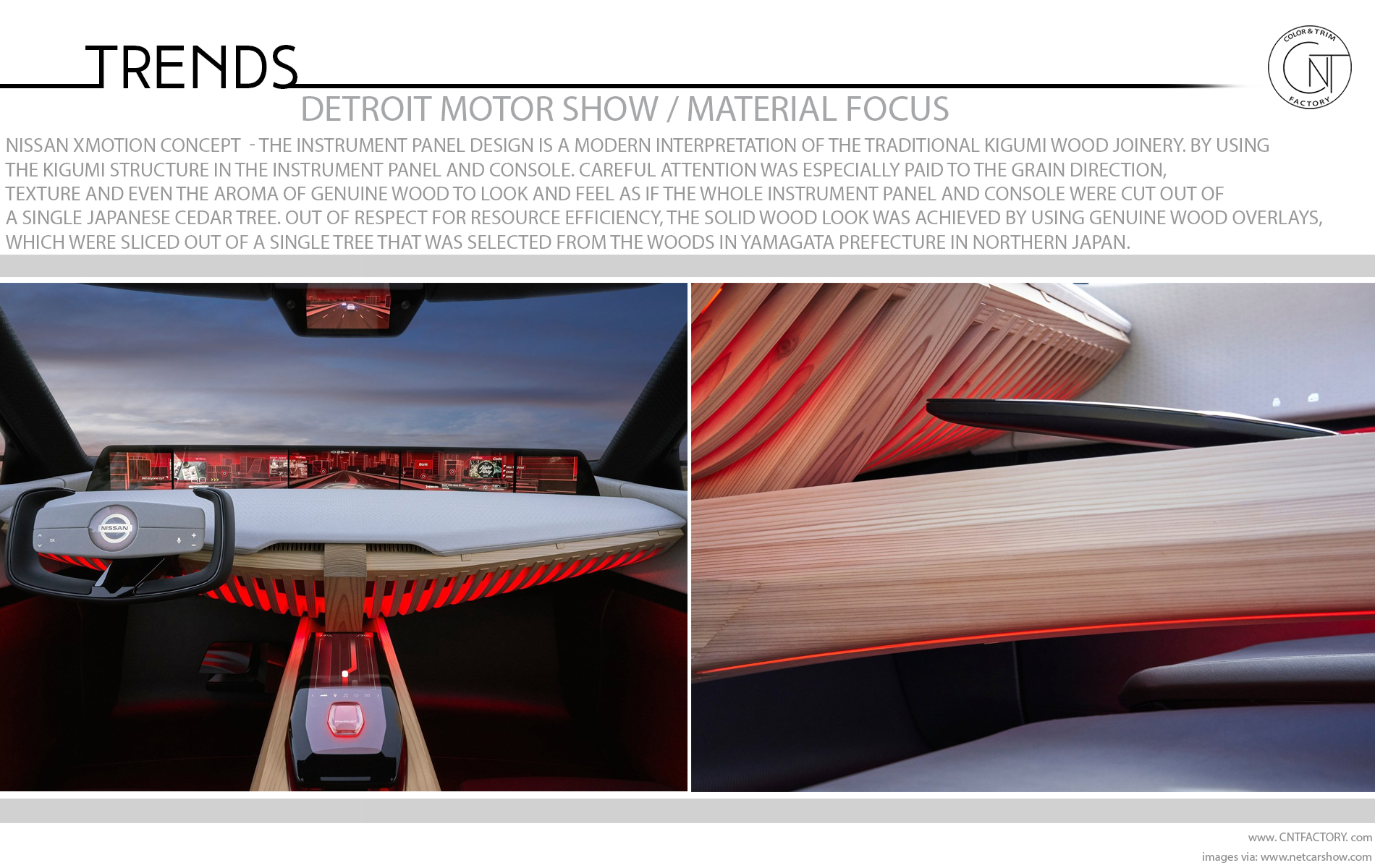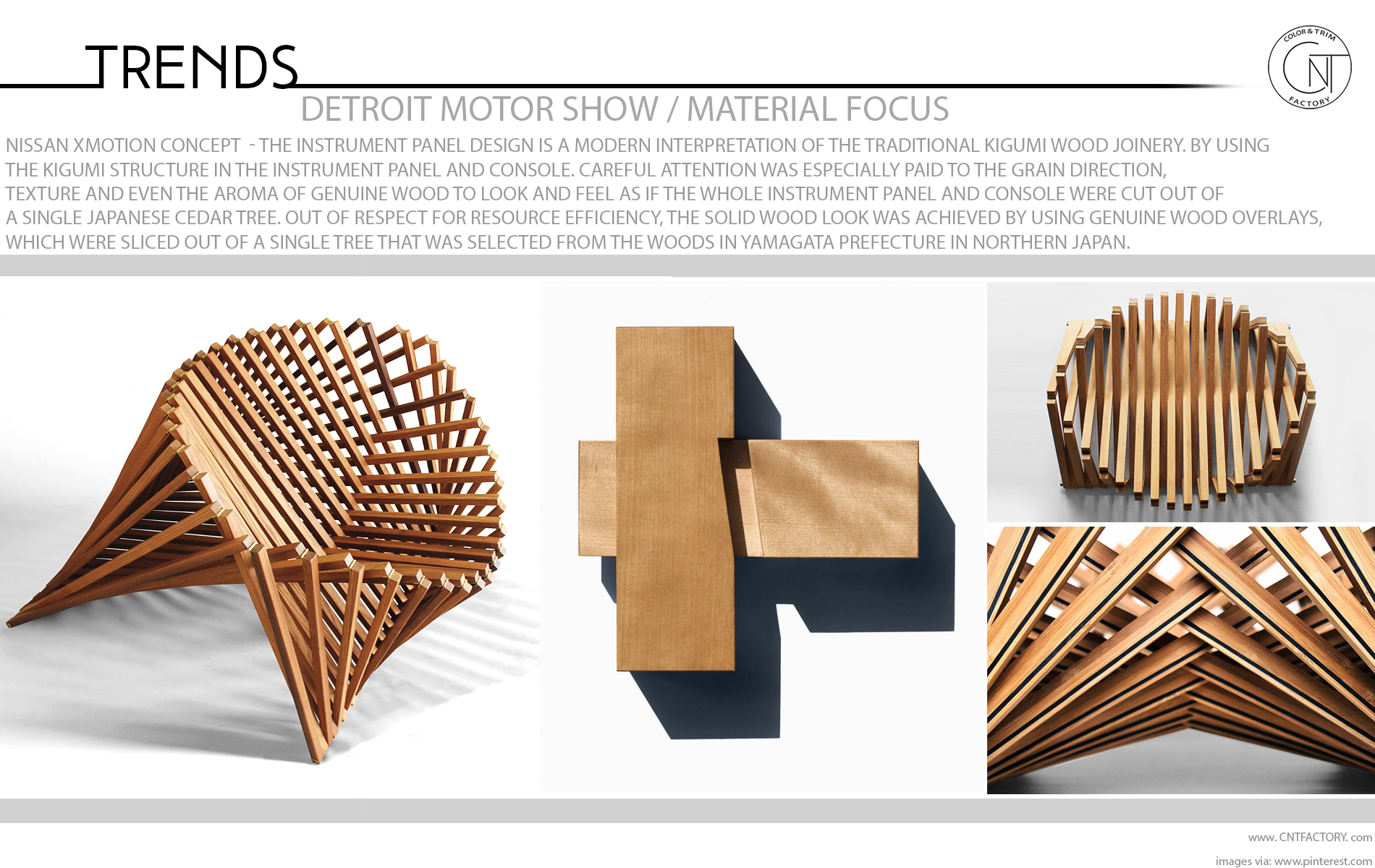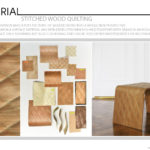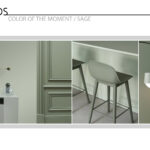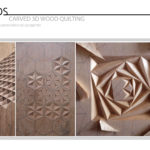A landscape with a bridge. The interior was created with the imagery of a Japanese landscape. The floor represents a river – with the center console acting as a bridge that connects the front and rear passenger areas. The console, the core of the interior design, uses one of the many traditional Japanese architectural wood joinery techniques, kanawa tsugi. Found in the carpentry used to build religious temples and shrines, the technique doesn’t use a single nail or glue and is known for its strength and durability.
Similarly, the instrument panel design is a modern interpretation of the traditional kigumi wood joinery. By using the kigumi structure in the instrument panel and console, the Xmotion concept interior suggests a robust bone structure, creating a sense of strength and trust that passengers want to feel in their vehicle.
Careful attention was especially paid to the grain direction, texture and even the aroma of genuine wood to look and feel as if the whole instrument panel and console were cut out of a single Japanese cedar tree. Out of respect for resource efficiency, the solid wood look was achieved by using genuine wood overlays, which were sliced out of a single tree that was selected from the woods in Yamagata Prefecture in northern Japan.
Related Post: Kumiko Woodwork Technique / Carved 3D Wood Quilting / Wooden Soft Shelves

